The author (left) and Brayden March comparing a modern Traditions PA Pellet Accelerator flintlock to an old custom-made long gun. March’s grandfather gave the gun to his grandson when he turned 12—the minimum hunting age in Pennsylvania. Henry Hung
AS THE FINAL HOLDOUT state to maintain a flintlock-specific muzzleloader season, Pennsylvania’s big woods are full of tradition and smoke from the day after Christmas until the middle of January. It’s a season where modern tech like synthetic stocks and sabots clash with century-old rifles that rely on real flint and loose powder.
There’s nothing quite like the feeling of walking through the woods with a weapon you’re not entirely confident in. Sometimes, when you’re unaware that your powder is wet, you could spend an entire day slipping around the woods with a fancy stick—and be just as effective. On the rare day, perhaps one season out of every five, when you stalk through the open hardwoods and make a perfect 30-yard shot on an unsuspecting doe, you’ll feel like Daniel Boone.
Most hunters are familiar with the Kentucky rifle. Fewer hunters know it by its original name: the Pennsylvania rifle. Immigrants to what is now Lancaster County, in southeastern Pennsylvania, are credited with its development. German settlers who emigrated with their native country’s shorter Jäeger rifles began to improve on the platform in the early 1700s by lengthening the barrel and downsizing the caliber, among other modifications. The resulting Pennsylvania rifle was used by soldiers in early American conflicts from the mid 1700s through the early 1800s, including the Revolutionary War.
Of course, settlers and frontiersmen also relied heavily on the Pennsylvania rifle for hunting. Today, plenty of modern deer hunters relish Pennsylvania’s enduring flintlock season, relying on traditional tactics like still-hunting or the teamwork of a massive coordinated deer drive. Others object to its exclusion of inline muzzleloaders, which are more accurate than flintlocks and can kill deer at farther ranges. In 2002, the Pennsylvania Game Commission expanded a separate three-day flintlock season in October to include inline muzzleloaders. That hasn’t fully appeased inline hunters (it’s a doe-only season), but it has prevented major changes to the traditional late-season flintlock hunt—for now.
As a Pennsylvania native, I look forward to this hunt all year. Our state has plenty of hunting traditions but this one is unlike any other. It’s hard not to appreciate the flintlock season for precisely what it is: a low-odds, late-season grind that pays homage to our state’s hunting heritage.
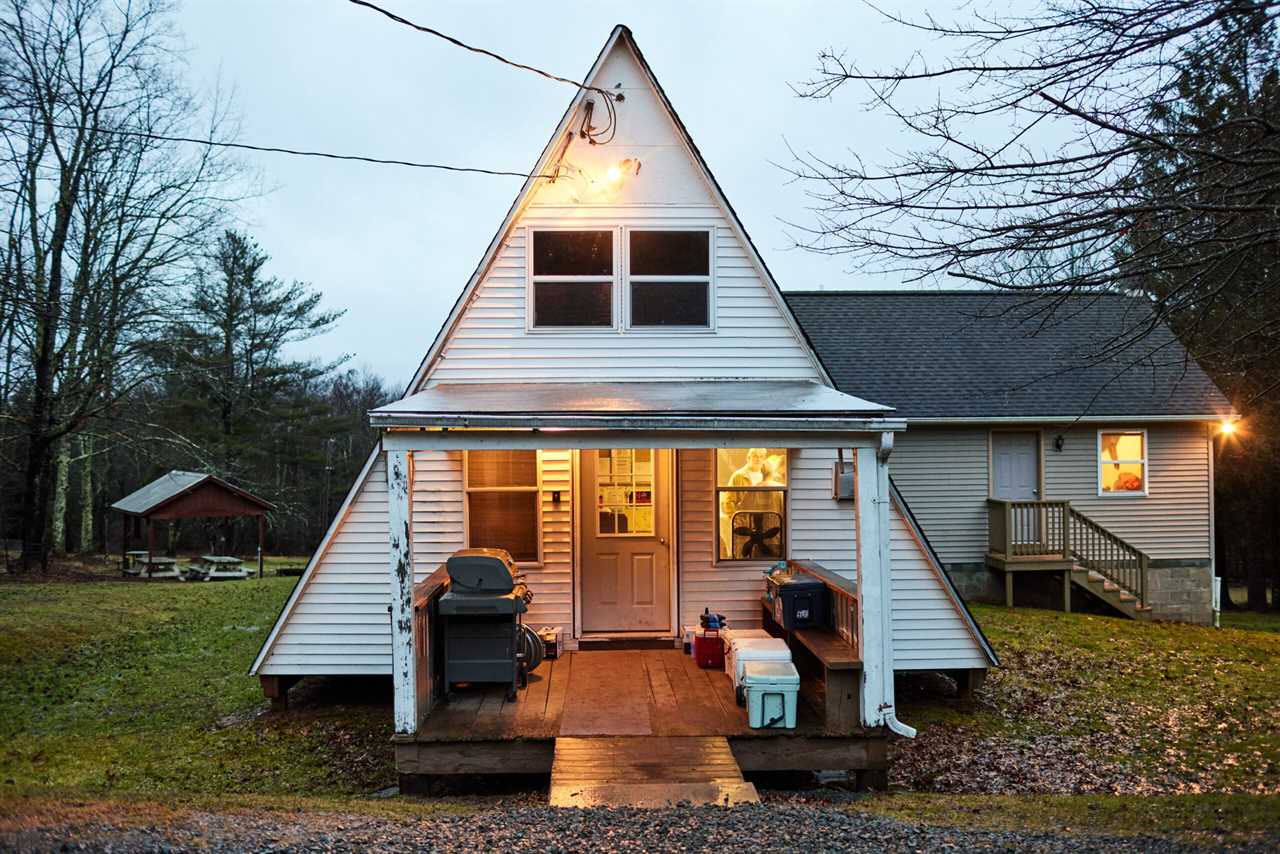
This A-frame cabin, which serves as a hunting camp for some 30 members, has stood in Sullivan County for almost 50 years. The founding members bought the property nearly 50 years ago, burning down the previous building to make room for their dream cabin. Henry Hung
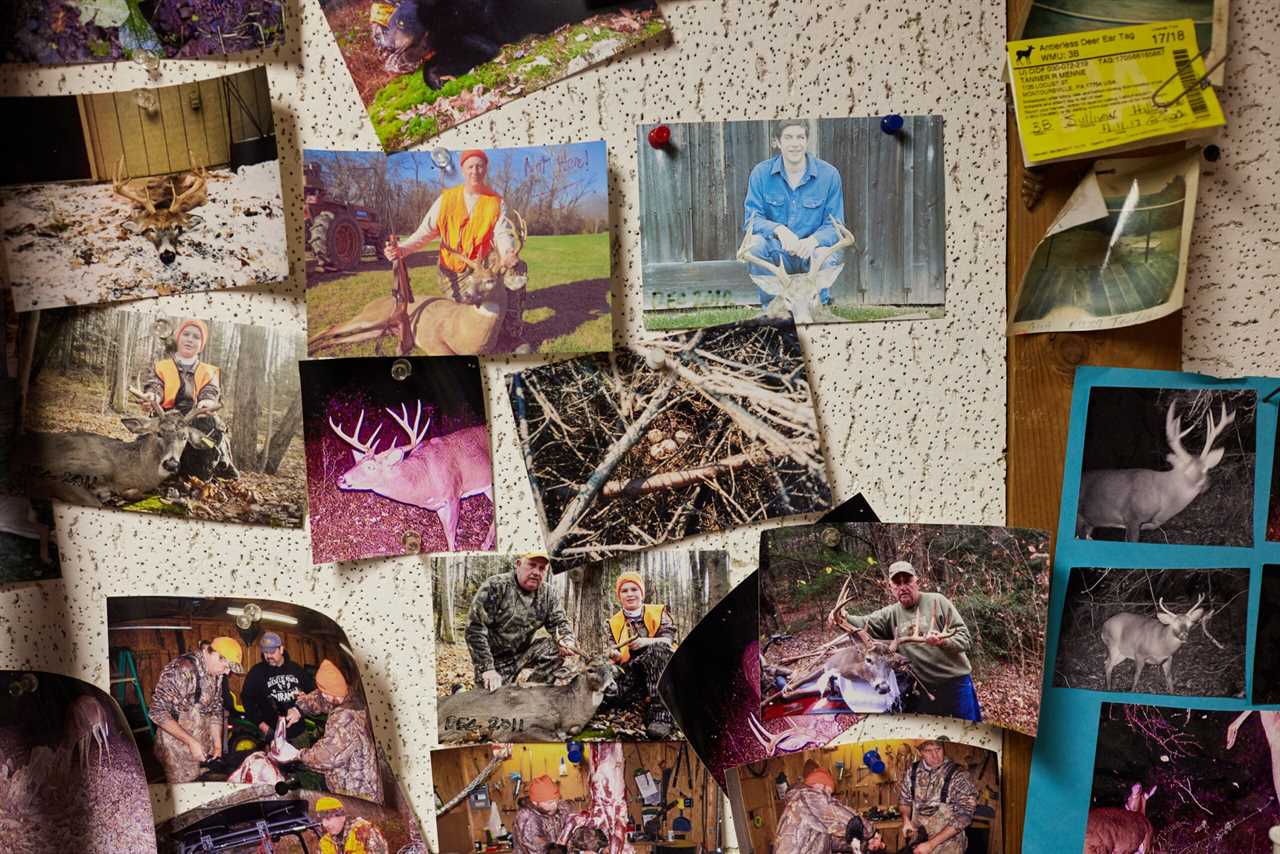
This bragging board runs the length of the camp’s dining room table—some 20 feet long—and is a testament to the number and caliber of deer that live on the state game lands around the camp. Henry Hung
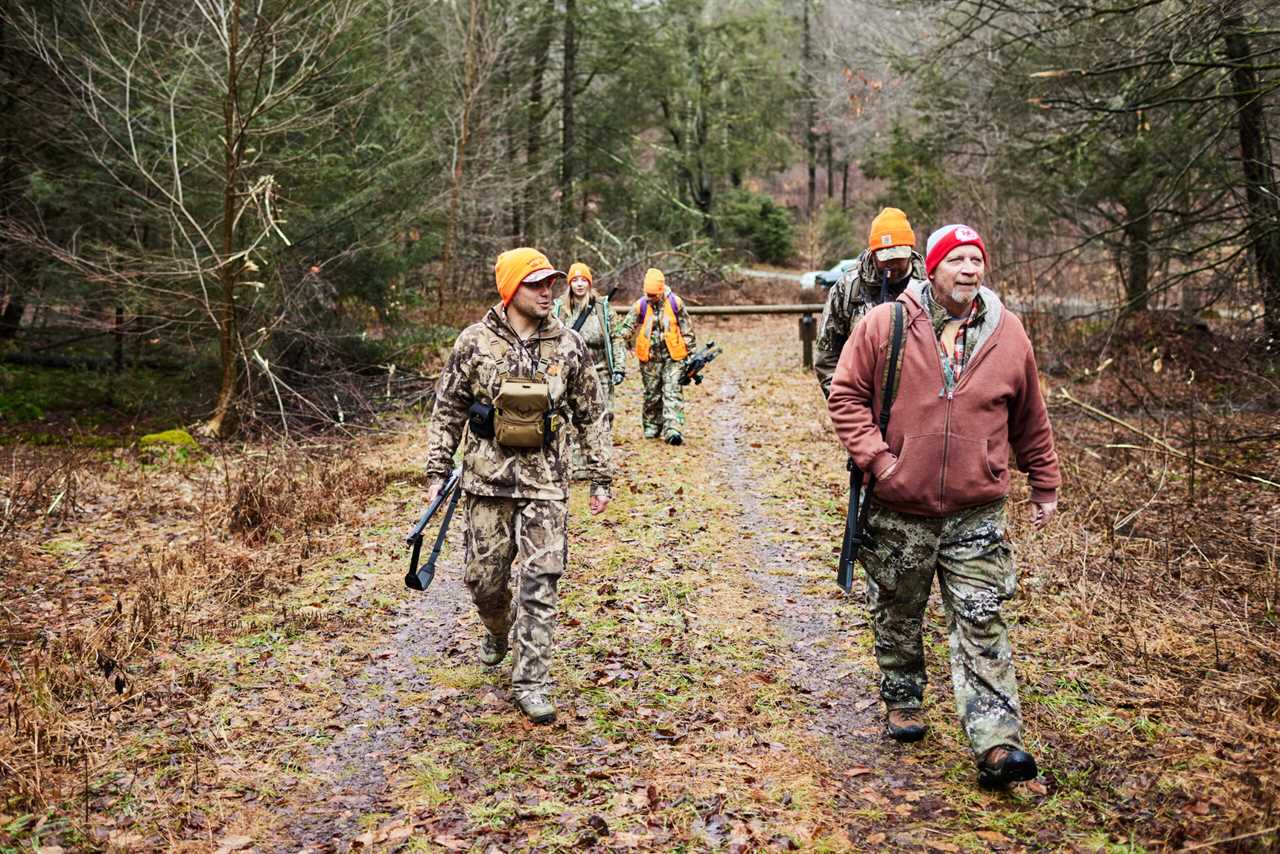
Blockers (or watchers, as they’re called in this part of Pennsylvania) head out to take their positions for the first drive. A quarter-mile push through a ridge of mountain laurel and thick pines produced eight does—all of which outsmarted our setup or flushed just out of range of our flintlocks. Blaze orange is not required for the flintlock season, though many hunters choose to wear an orange hat or vest. Henry Hung
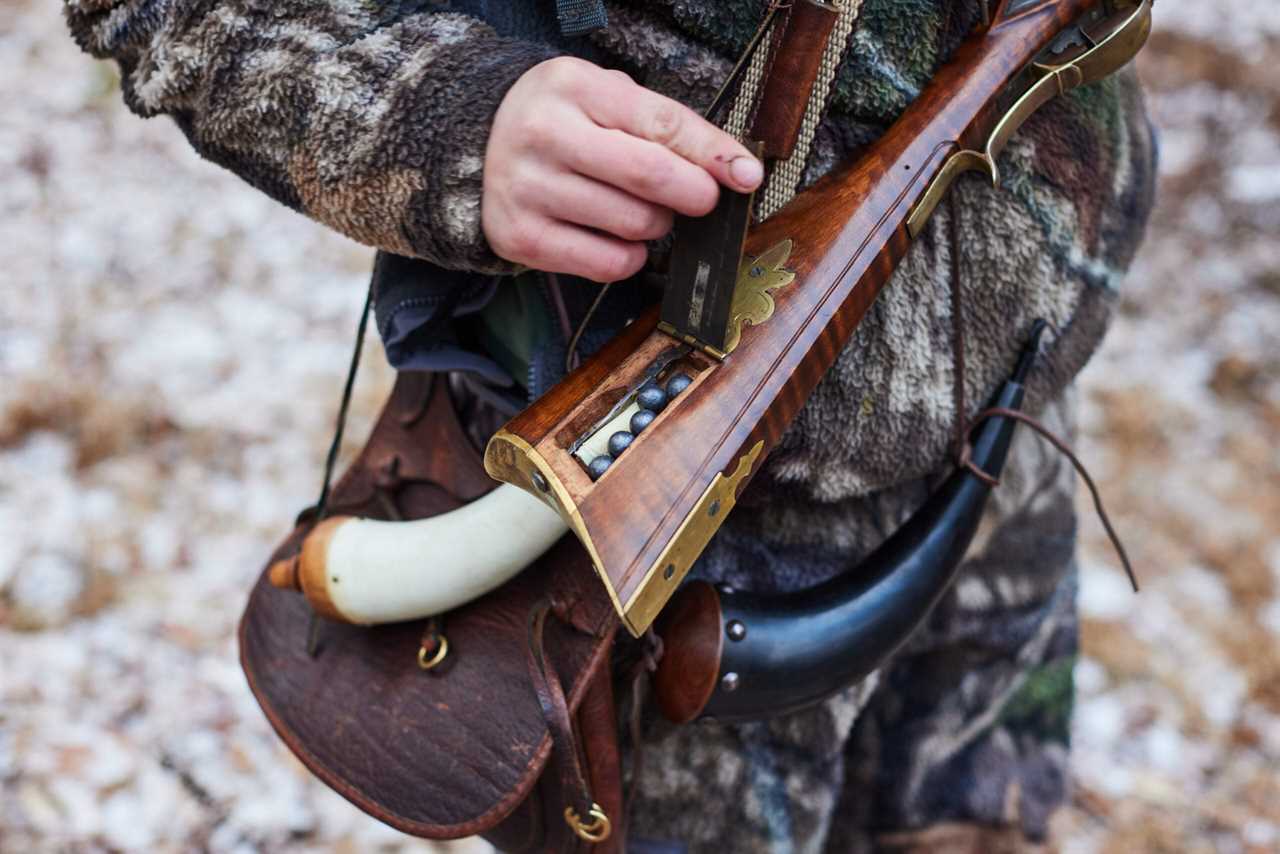
Brayden March, 17, carries his rifle, which includes a storage compartment for round balls in the stock, alongside a pair of powder horns (the flintlock requires two types of powder), and a satchel for carrying cleaning patches, a patch puller, a ball puller, and other accessories. The flintlock was custom-made by his grandfather in the 1970s. “I still carry the old long gun because I like the feeling of being in the shoes of hunters generations before me, and feeling how they must have felt walking through the same woods all of those years ago.” Henry Hung

Although it’s custom-made, March’s flintlock operates just like everyone else’s. To load it: Pour the desired amount of FFg powder down the barrel (most hunters use anywhere from 65 to 100 grains). Using the ramrod, push the patch-covered round ball down the barrel until it has compacted the FFg powder and can’t go any farther. (Some hunters notch their ramrod to take the guesswork out of properly seating the projectile.) Next, pull the hammer (left) back into the half-cocked position. Fill the flash pan (center) with fine-grain FFFFg black powder. Cover the flash pan with the frizzen (right) and thumb back the hammer into the fully cocked position. Then the flintlock is ready to fire. Once the trigger is pulled, the hammer springs the flint forward into the frizzen, creating a spark that ignites the flash-pan powder, which burns through a touch hole and ignites the powder inside the barrel, propelling the round ball out of the barrel. Henry Hung
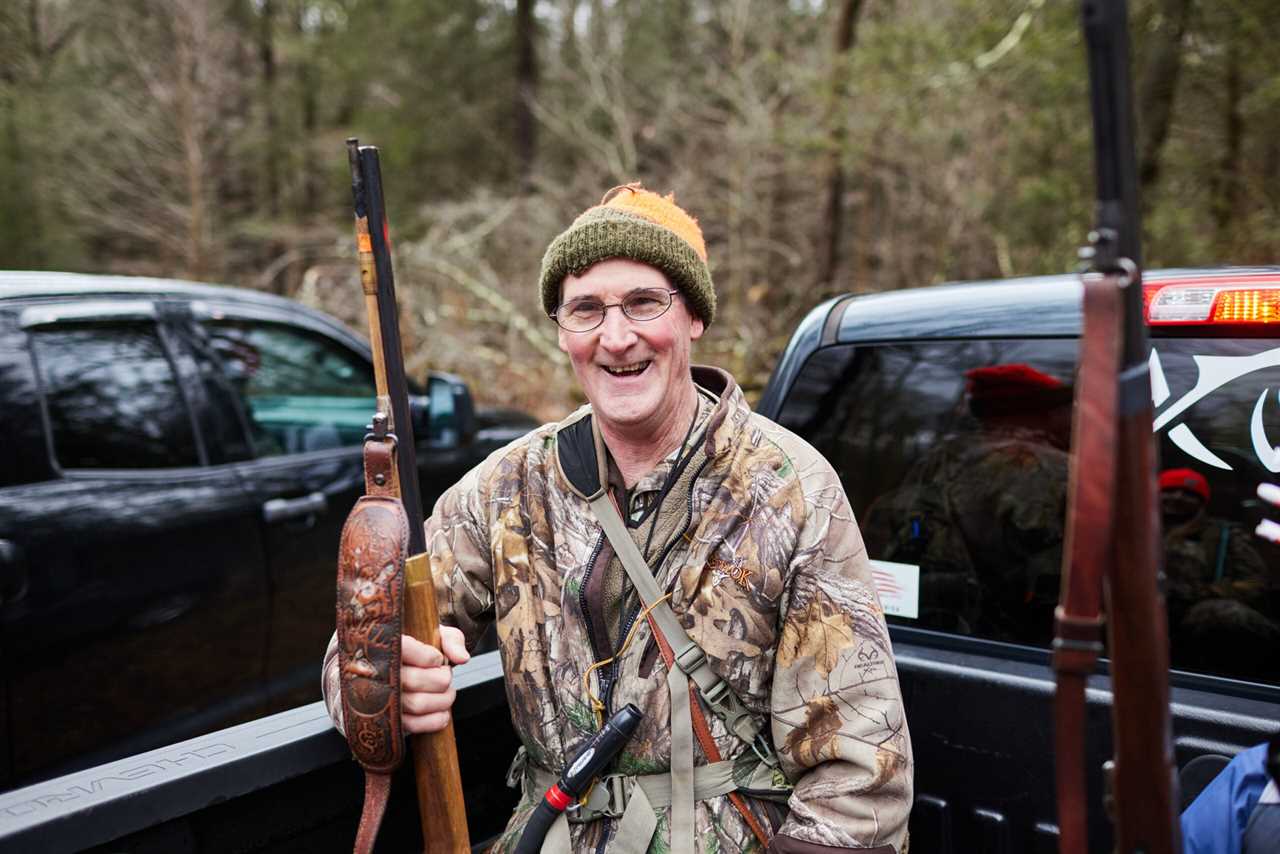
One of the founding members of this deer camp, Steve Waldman, of Montoursville, has been flintlock hunting for 45 years. In all of those years, he has successfully harvested just two deer with his flintlock. The low success rate doesn’t deter him from loading his flintlock each season because, as he says, “It’s just too much fun.” Henry Hung

Madalynn Talerico, 26, pauses while pushing the woods, on alert for deer that might cut back through the drivers. Although she’s hunted with a bow and a modern rifle for years, she relished the excitement—and challenges—of her first flintlock season. “The flash-pan powder had gotten moisture in it from the air, so the gun didn’t even go off on the only deer I tried to take a shot at this year,” Talerico says. “That was pretty disappointing, but it also lit a fire in me to try to avoid small mistakes like that in future seasons.” Henry Hung
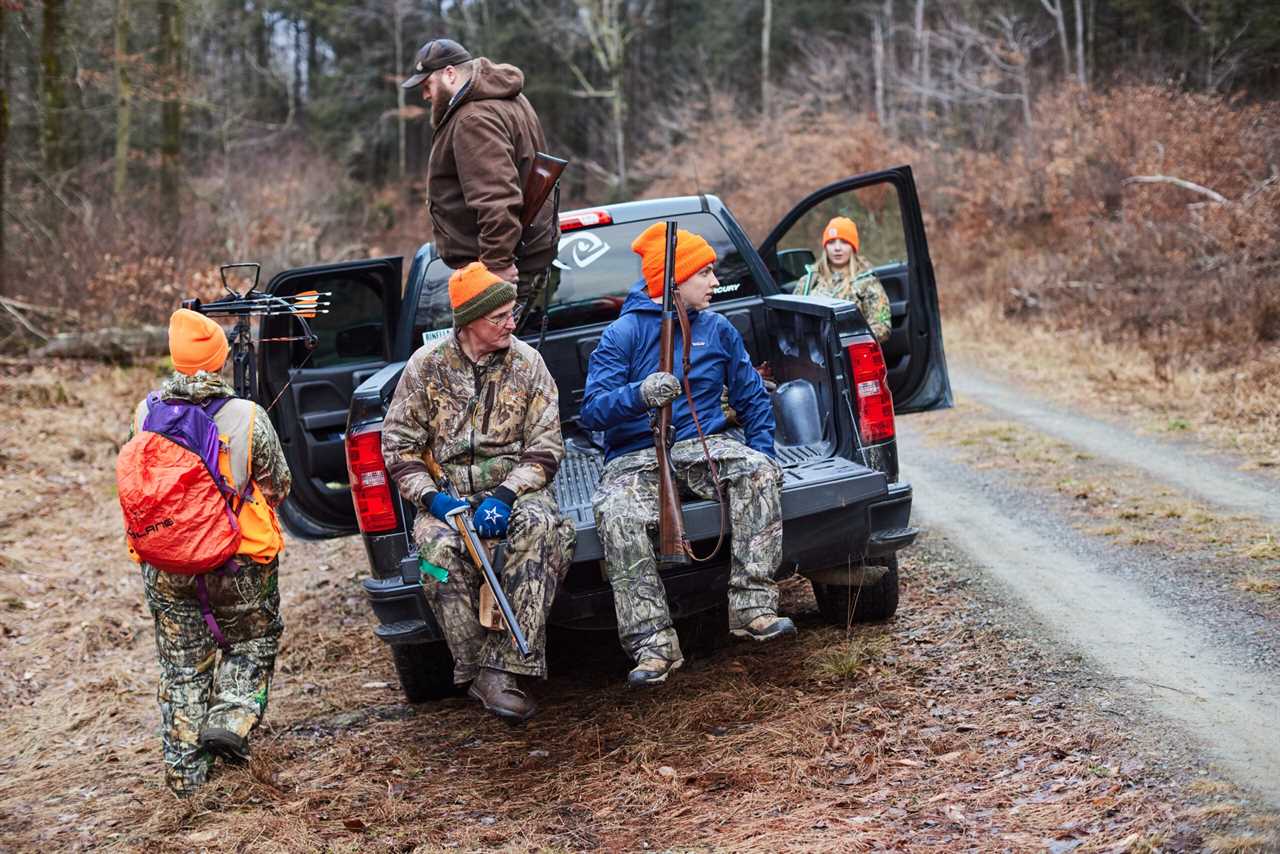
Loading the trucks to return to camp for a hot dinner and cold beers. A day full of drives produced 25 deer, all of which flushed beyond the effective range of our flintlocks. Instead of sour moods over the lack of punched tags, hunters were in high spirits about the deer we did see, and what tomorrow would bring. Henry Hung

Ending our first day with a game of Setback in the living room at camp. With a good bit of strategy and a little luck, I was able to win a few rounds before heading to bed. Henry Hung
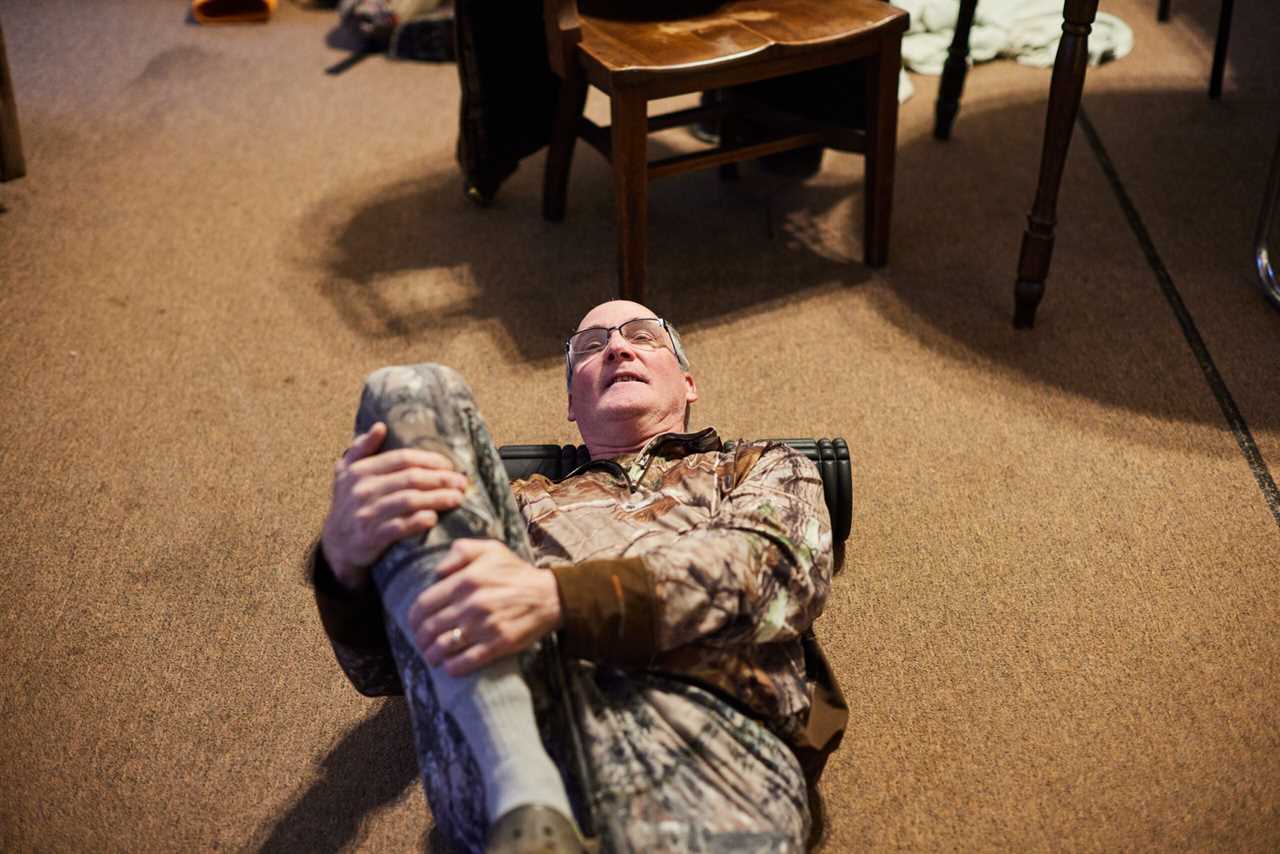
Waldman, 64, stretches on a foam roller during breakfast to avoid injuring himself in the woods. Predictably, jokes began to fly. “Make sure to stretch your shoulders too!” hunter Zac Clark shouted, bellowing as if Waldman’s hearing might be going too. “I’ve been stretching before each hunt for the better part of a decade,” Waldman says. “I’ve heard it all.” Henry Hung
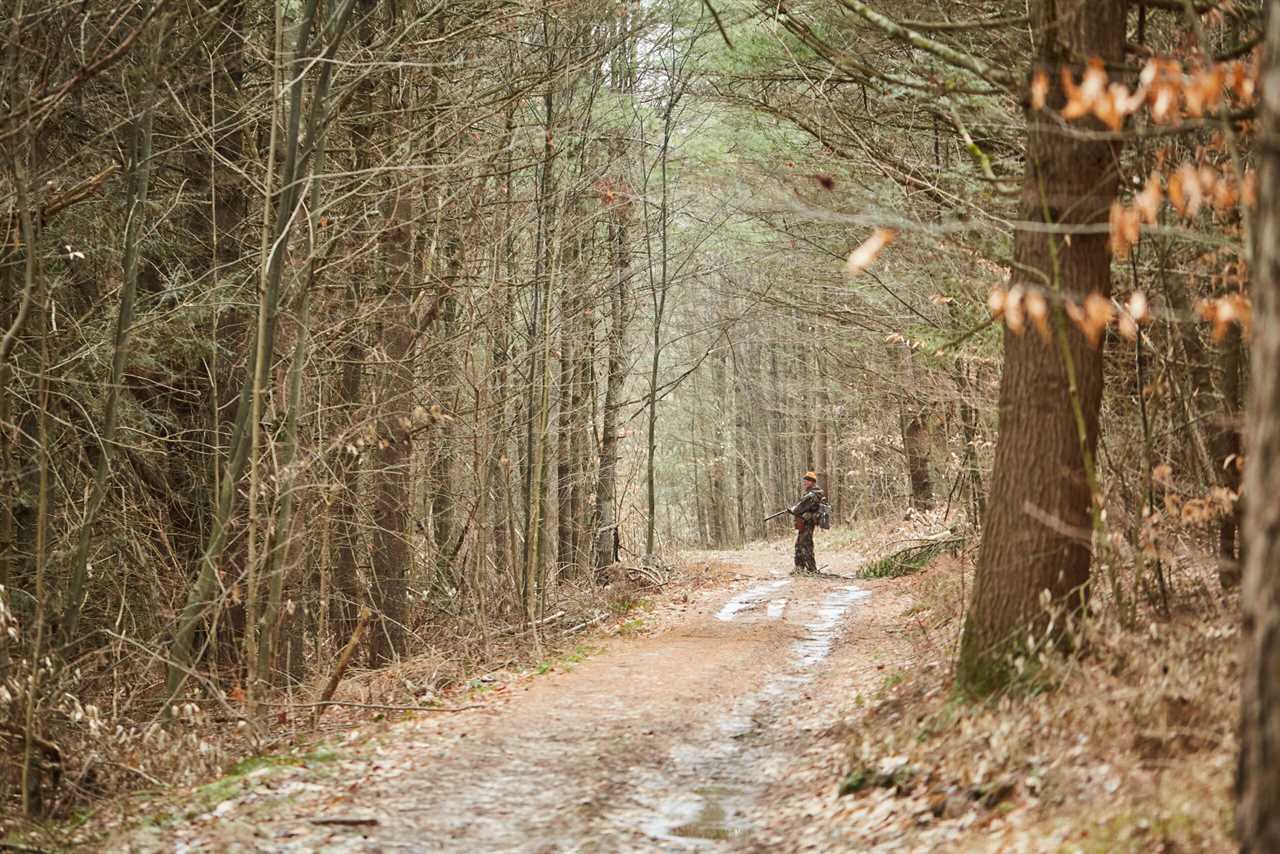
A watcher waits on an old logging road for deer to be driven to him. As drivers made their way up the ridge, a shot rang out close by. A lucky hunter—not from our group—had been sitting in the right place at the right time when one of the deer we pushed squirted out the side of our drive and into his lap. State Game Lands 134, which consists of some 8,000 acres in north-central Pennsylvania, is known for its abundant deer population and steep ridges thick with mountain laurel and pine. With most major logging projects occurring more than 70 years ago, these old-growth canopies create the illusion of deep backcountry even if you’re just a few hundred yards off of the access road. The PGC has created habitat management areas among the old growth by clear-cutting select areas to create thick cover for deer, upland birds, and small game. Henry Hung
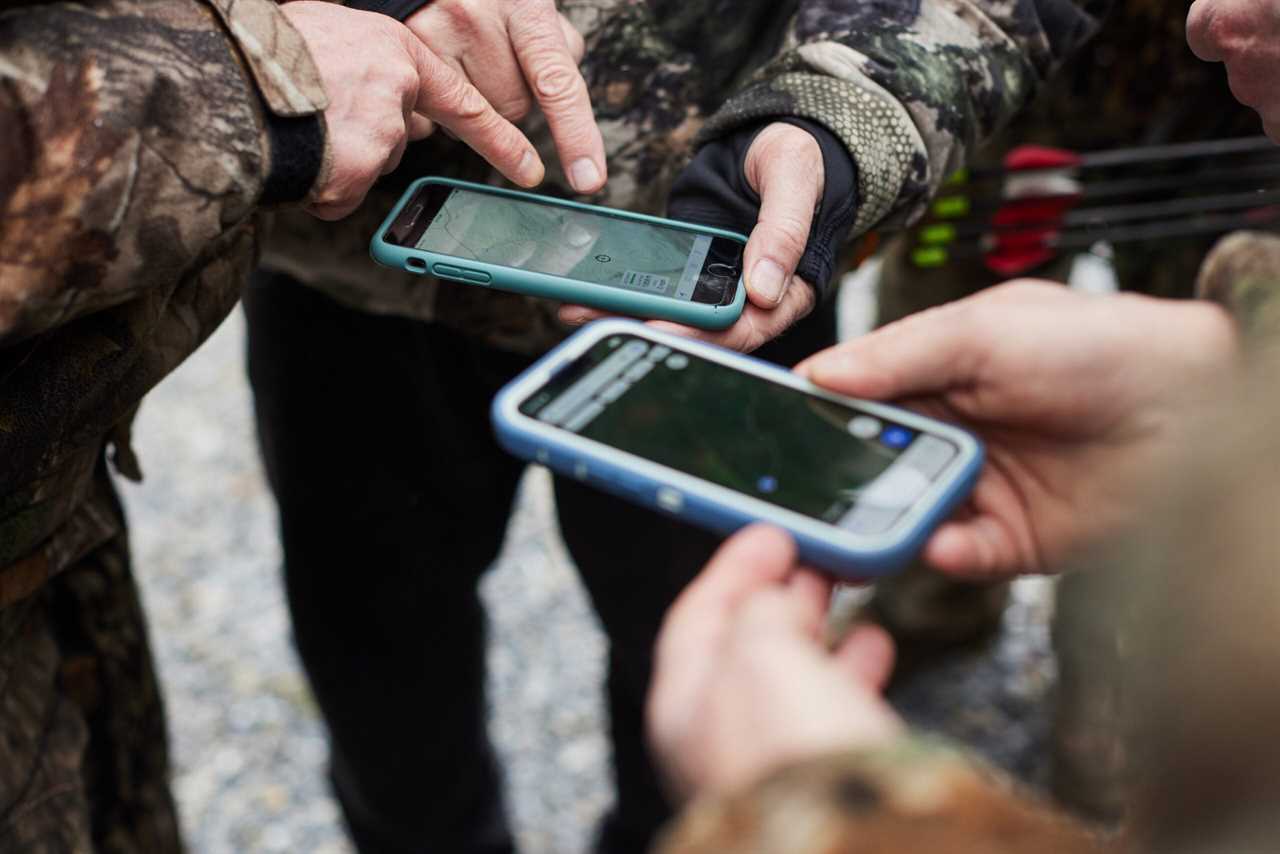
Getting ready for the second drive of the day. Planning a deer drive through the big woods is easier said than done. Sometimes, battling the mountain laurel is the easy part, as the planning can take anywhere from 15 minutes to an hour. With multiple “captains,” each with their own idea on how to push the next ridge, choosing a plan became a democratic process that came down to gut feelings and, occasionally, votes. Some drives went perfectly to plan, while others fell short. Some hunters get overly emotional when a drive doesn’t come to fruition (a common outcome for big group drives in the Northeast), and that’s why I continue to hunt with this laid-back group: tempers rarely flare. Henry Hung
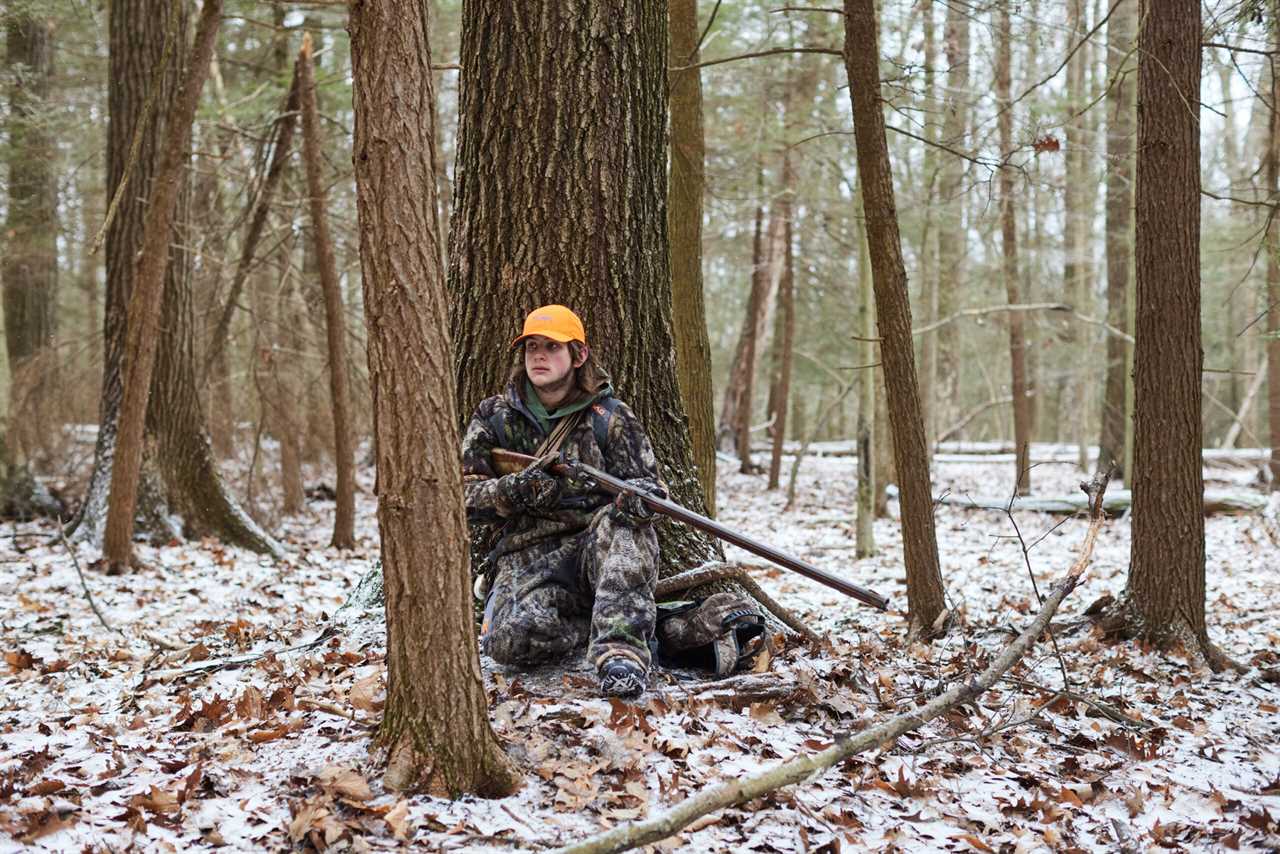
As snow begins to accumulate, watchers like March can more easily spot deer as they trot across the landscape. This drive seemed to have everything going for it—thick cover, plenty of sign, and lots of deer—but no shots were fired. Henry Hung
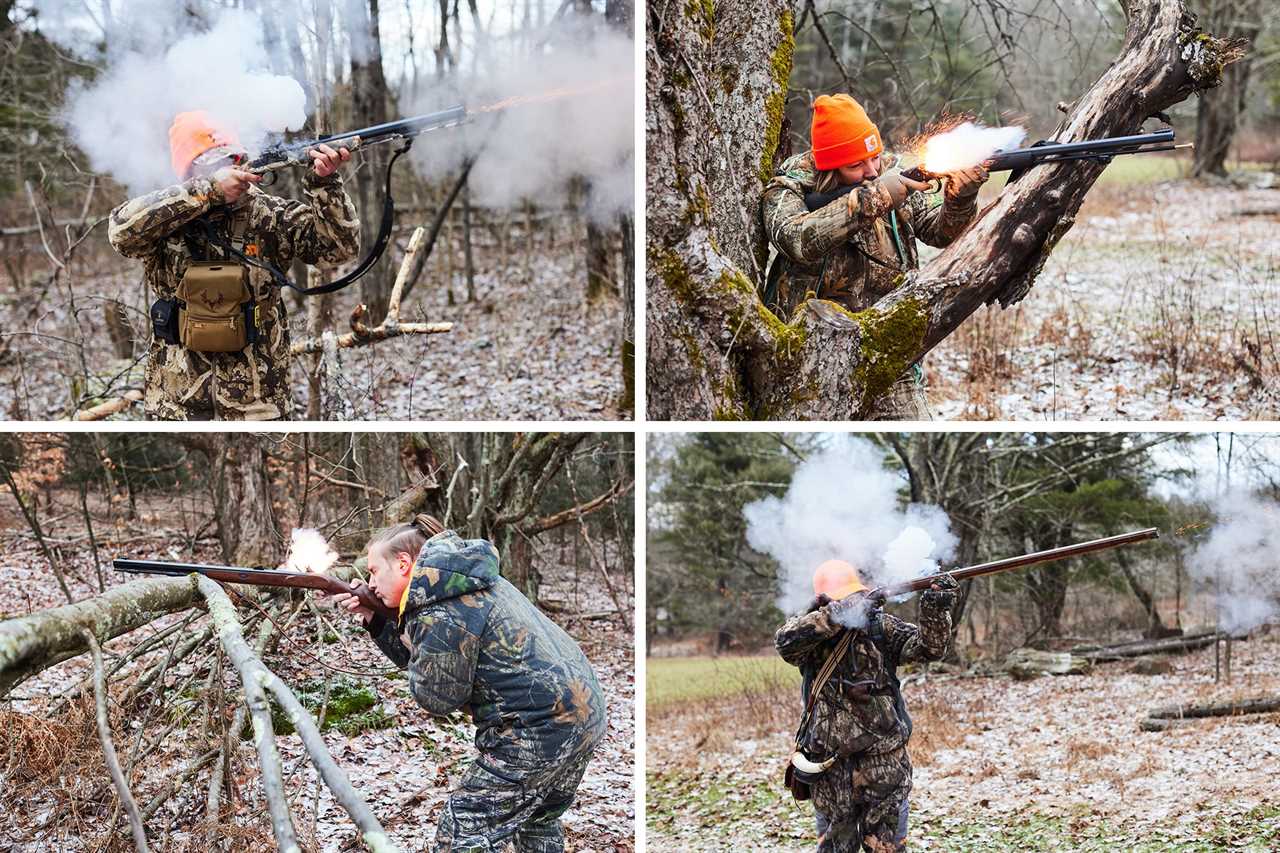
After finishing our final drive of the season, we unload our flintlocks. Our crew used the opportunity to check our aim. There’s something mesmerizing about peering through the cloud of blackpowder smoke after a shot. Depending on the humidity, it could be seconds before the smoke clears and you’re able to see if you were successful or not. Clockwise, from top left: The author fires his .50-caliber Traditions PA Accelerator; Talerico unloads her 50.-caliber Traditions Deerhunter; March shoots his grandfather’s custom-made long rifle; Austin Strosser fires his .50 caliber Lyman Deerstalker. Henry Hung
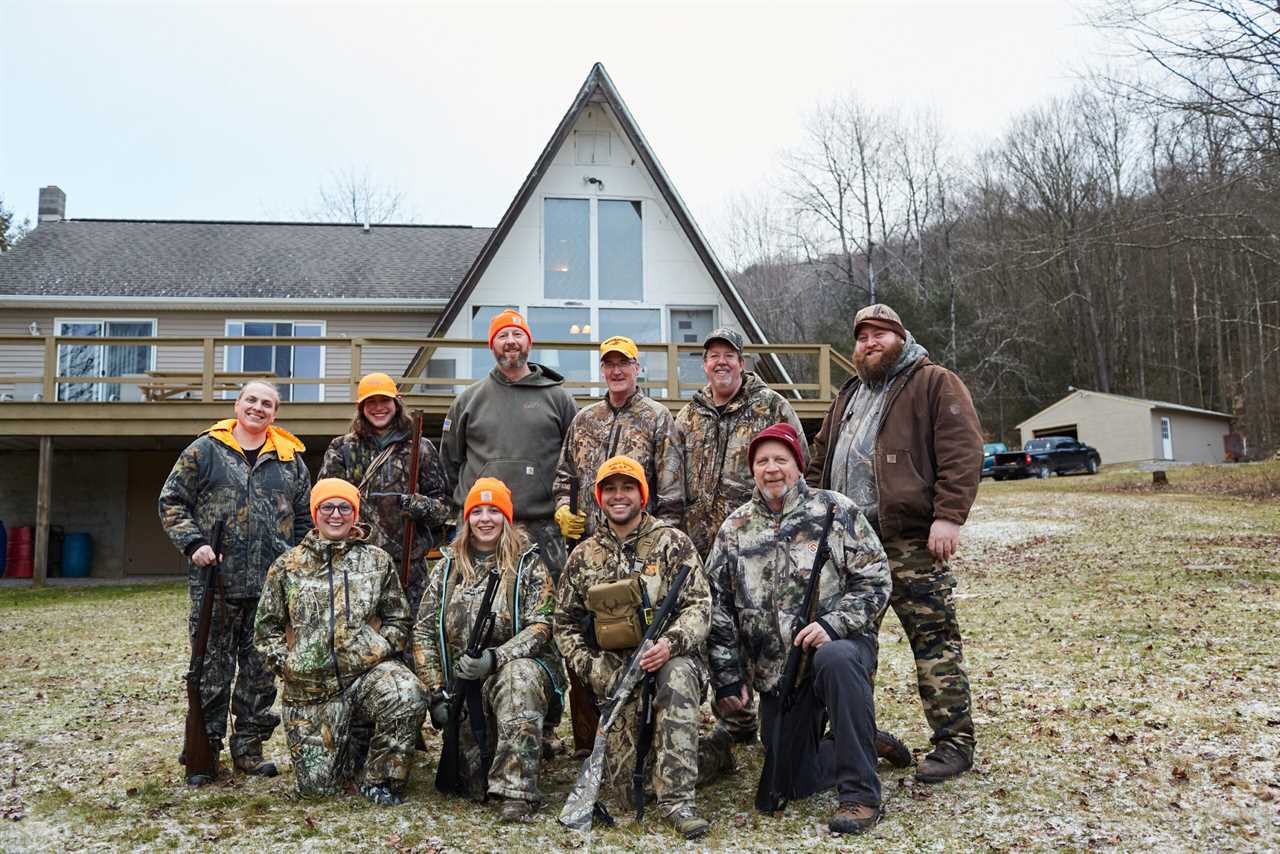
Posing for a camp bulletin-board photo. While this year’s deer drives didn’t produce any filled tags for our crew, it helped keep the tradition of Pennsylvania flintlock hunting alive and well. Zac Clark (back row, far right) is our crew’s outlier for flintlock success: He’s tagged 15 deer in 20 flintlock seasons. The hunt always fell during his winter break in high school and college, when he was able to spend the most time in the woods. “I’ve killed more deer with my flintlock than any other weapon,” says Clark, 32. “I love hunting this time of year. I look forward to these three weeks all year, and once the season kicks off, I make the most of every second.” Front row, from left: Whitney Strosser, Madalynn Talerico, the author, and Dean Severson. From left, back row: Austin Strosser, Brayden March, Dave Steele, Steve Waldman, Kurt Westbrook, and Clark. Henry Hung
Read more OL+ stories.
The post Photos from Pennsylvania’s Flintlock Season, the Last of Its Kind in the Country appeared first on Outdoor Life.
Articles may contain affiliate links which enable us to share in the revenue of any purchases made.
By: Henry Hung and Derek Horner
Title: Photos from Pennsylvania’s Flintlock Season, the Last of Its Kind in the Country
Sourced From: www.outdoorlife.com/hunting/pennsylvania-flintlock-season/
Published Date: Tue, 24 Jan 2023 23:30:00 +0000
----------------------------------------------
Did you miss our previous article...
https://manstuffnews.com/weekend-warriors/the-best-baitcasting-rods-for-bass-of-2023-tested-and-reviewed
 Backyard GrillingWeekend WarriorsAdvice from DadBeard GroomingTV Shows for Guys4x4 Off-Road CarsMens FashionSports NewsAncient Archeology World NewsPrivacy PolicyTerms And Conditions
Backyard GrillingWeekend WarriorsAdvice from DadBeard GroomingTV Shows for Guys4x4 Off-Road CarsMens FashionSports NewsAncient Archeology World NewsPrivacy PolicyTerms And Conditions
